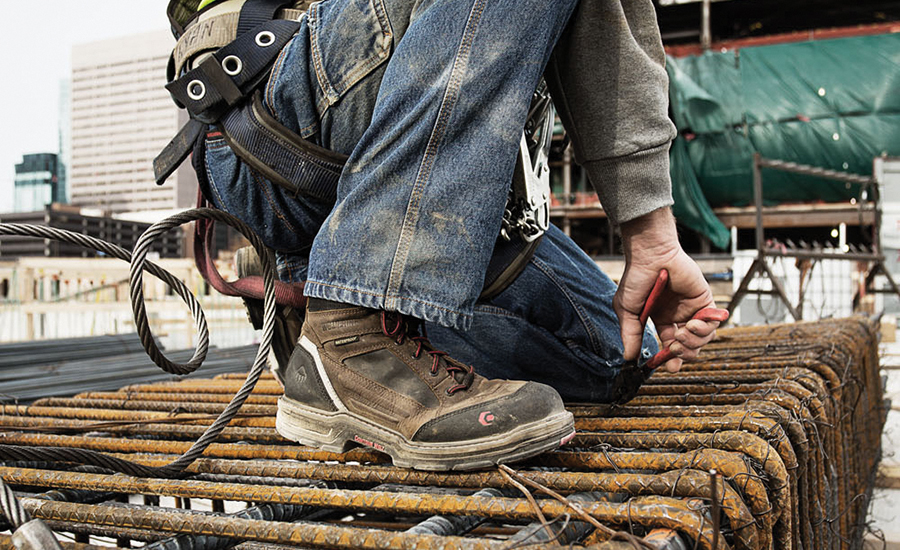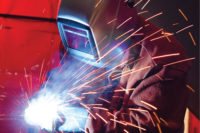Nanotechnology enables strong and lightweight toe protection

Hard work is deeply rooted in human history. For centuries, men and women have been building the world around us through tough, manual labor. When the Occupational Safety and Health Act passed in 1970, labor forces made the workers’ safety a priority. As stipulated in this act, OSHA requires that employers ensure each affected employee uses protective footwear when working in areas where there is danger of foot injuries due to falling or rolling objects, objects piercing the sole, and when an employee’s feet may be exposed to electrical hazards. By meeting these standards, employers can help to make sure that their most valuable assets—their employees—are safe at their job day in and day out.
Work safety standards and steel toes
To keep up with the new safety demands, boot manufacturers began to improve upon the basic safety boot. Today, many safety toe boots are available in steel, composite (carbon fiberglass) or aluminum alloy toecaps. Few materials can meet or exceed the strength, resilience and elasticity of steel, which makes it the most common material for safety toes. The majority of steel toe boots are made to meet the American Society for Testing and Materials standard, commonly known as ASTM F2413-11 M I/75 C/75. This standard certifies that the boot is impact resistant to 75 foot-pounds, compression resistant to 2500 pounds of pressure, and approved by the ASTM as protective toecap footwear. Steel toe boots are crafted with a layer of protective metal infused in the toe which ensures long-lasting safety.
Composite toes
While steel toe boots are still an industry standard, many boot brands have integrated a composite toe into their work boots to give consumers more comfortable and lighter options.
Safety boots with composite toes are made up of thermo-formed resins and fiberglass composites. With the development of these new materials, industry testing has found that composite toes provide the same level of protection and meet standards such as ASTM F2413-11 M I/75 C/75.
Safety toes made of composite materials also provide many added benefits. Since the boots protect the toe area without the use of metallic material, they pass through metal detectors with ease. Without conductive metal material, composite toes also will not conduct heat or cold in extreme temperatures for added comfort. Composite toe materials are also lighter in weight, reducing stress on the legs throughout long workdays, however the reinforced material of a safety composite toe tends to be thicker and slightly more bulky compared to a steel toe.
The future of the safety toe — nanotechnology
Technology innovations have revolutionized the world—including the world of work safety. Consumers are no longer limited to protecting their feet with thick and heavy fiberglass composite materials. Safety composite toes are being transformed down to the smallest particle of material—the nanometer. Some composite toes can now be crafted of the most advanced nanotechnology that is made up of carbon nanotubes, a tiny carbon structure arranged into a beehive structure and wrapped into a cylinder that is 10-50 nanometers in diameter.
To put its size into perspective, one nanometer is to a tennis ball what a tennis ball is to the earth. When these tiny tubes are intricately woven together, they become a strong, tough and durable material. These incredibly strong carbon nanotubes combined with a fiberglass resin will create one of the strongest and lightest safety toes on the market while still meeting ASTM standards.
With less weight in the toecap, the weight of the boot is distributed more evenly, eliminating toe drop and reducing fatigue on lower body muscles and joints. Reduced fatigue makes for better work performance and productivity. Nanotechnology also makes it possible for the toecap wall to be thinner, allowing for more toe room and a more comfortable work boot.
The evolution of safety footwear has given consumers increasingly more options of styles and materials when choosing the perfect boot for the job. More options mean a boot that is right for every foot, working condition and comfort preference. It’s imperative for everyone from construction workers and mechanics to DIYers and family handymen to find the perfect pair of footwear in order to have the most comfortable and productive workday—every day. Look for nanotechnology to improve next season’s safety toe boots for your workforce.
Looking for a reprint of this article?
From high-res PDFs to custom plaques, order your copy today!




